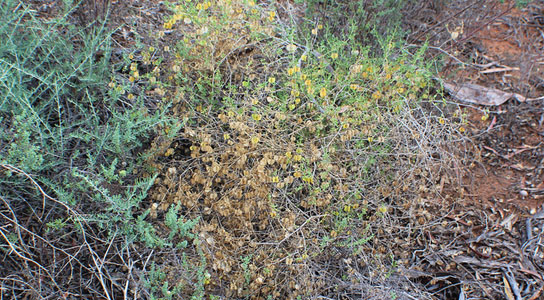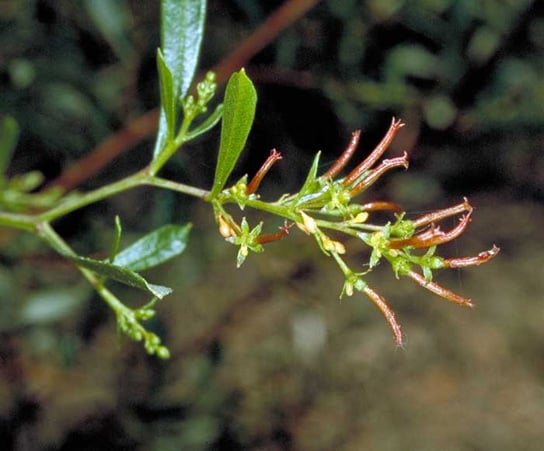
While some mass media outlets are dismissing the obvious global climate change, nature isn’t. The hopbush (Dodonaea viscosa), the subspecies angustissima in South Australia, has lost width in its leaves by more than 2mm in the past 127 years, which is a 40% decrease.
The findings were published in the journal Biology Letters. Other studies have documented these kinds of shifts in species ranges as well as the timing of natural cycles, like plant flowering and bird migration, all of a result of global warming. Few of those have demonstrated morphological adaptations to the climate change.

Greg Guerin, an ecologist at the University of Adelaide in Australia, co-author of the study, states that the responses to climate change are happening right now, not in some distant future. Between 1950 and 2005, the average maximum temperature in South Australia increased by 1.2 °C (2.2 °F), which is more than the global average. There have been also several extreme droughts in this area.
Guerin and his colleagues measured the hopbush plants across 600 km (370 mi) of latitude and 1 km (0.6 mi) of altitude. The closer the plants grew to the equator, the narrower their leaves were. After analyzing the leaf shape of 255 herbarium specimens of the same subspecies going back to the 1880s, the scientists found that the leaves had become narrower.
Long, slender leaves reduce the amount of water lost from evaporation and gas exchange. The adaptive capability of the hopbush is indicative of its survivability at hotter temperatures. The researchers haven’t done specific genetic testing to determine whether the changes have an underlying genetic basis or whether the plants rely on a built-in plasticity that allows them to respond to the hotter temperatures.
Guerin and his team plan on continuing to investigate these plants, and studying the leaf ecophysiology in much more detail.
Reference: “Leaf morphology shift linked to climate change” by Greg R. Guerin, Haixia Wen and Andrew J. Lowe, 4 July 2012, Biology Letters.
DOI: 10.1098/rsbl.2012.0458
Never miss a breakthrough: Join the SciTechDaily newsletter.
1 Comment
“While some mass media outlets are dismissing the obvious global climate change, nature isn’t. The hopbush (Dodonaea viscosa), the subspecies angustissima in South Australia, has lost width in its leaves by more than 2mm in the past 127 years, which is a 40% decrease.”
If global warming has been happening for 127 years, since 1883, it can’t be being caused by people and that means this story can’t be true:
“Politics – The Single Most Important Factor in Limiting Global Warming”
https://scitechdaily.com/biggest-factor-to-limit-climate-change-is-politics/#comment-468114
It can’t be true because politics, which is purely a human activity, could not have caused it in 1883 when you said it was happening 127 years ago.